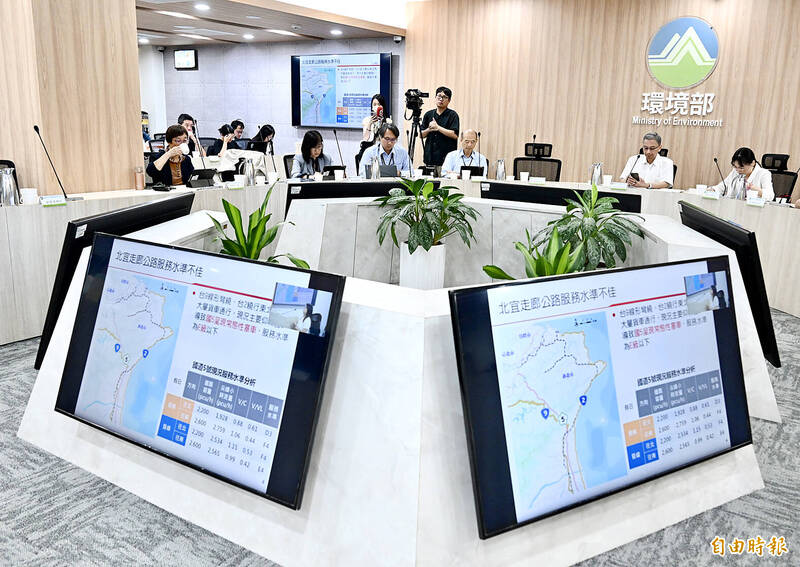Report on Bengaluru’s Strategic Waste Management Expansion
Addressing Urban Growth and Aligning with Sustainable Development Goals
Bengaluru is launching a significant infrastructure initiative to manage its escalating solid waste crisis, a measure directly aligned with several United Nations Sustainable Development Goals (SDGs). With waste generation projected to exceed 8,000 tonnes per day (TPD) by 2030, Bengaluru Solid Waste Management Limited (BSWML) is commissioning two large-scale integrated solid waste management (ISWM) facilities. This proactive strategy is essential for achieving SDG 11 (Sustainable Cities and Communities), specifically Target 11.6, which calls for reducing the adverse environmental impact of cities through improved municipal waste management.
Project Overview and SDG Integration
SDG 11 & SDG 12: Building Sustainable Urban Infrastructure
The core of the project is the establishment of two major ISWM plants to address the current shortfall in waste processing capacity. At present, nearly half of the city’s 6,115 tonnes of daily waste is sent to landfills, with existing plants processing only 1,160 TPD. The new facilities will substantially increase scientific processing, a critical step towards SDG 12 (Responsible Consumption and Production) by moving away from landfill dependency and towards a circular economy model.
- Current Processing Deficit: Existing plants operate below capacity, scientifically processing only a fraction of the city’s waste.
- Future Capacity: The new plants will add a combined processing capacity of over 6,000 TPD, ensuring the city can manage its projected waste generation.
SDG 3, SDG 6 & SDG 9: Enhancing Health, Environment, and Infrastructure
By scientifically processing waste, this initiative directly contributes to SDG 3 (Good Health and Well-being) and SDG 6 (Clean Water and Sanitation) by mitigating soil and water contamination from landfills. The construction of these state-of-the-art facilities represents a major investment in resilient and sustainable infrastructure, aligning with SDG 9 (Industry, Innovation, and Infrastructure).
Facility Specifications and Implementation
Proposed ISWM Facilities
Tenders have been issued for two plants under a Public-Private Partnership (PPP) model:
-
Southern Facility (Gollahalli):
- Capacity: 2,999 TPD
- Location: 100 acres near Anekal
- Catchment Zones: Rajarajeshwarinagar, Mahadevapura, South, and Bommanahalli
- Investment: Rs 802 crore for vehicles and Rs 1,010 crore for plant infrastructure
-
Northern Facility (Gundalahalli):
- Capacity: 3,073 TPD
- Location: 90 acres near Doddaballapur
- Catchment Zones: Yelahanka, Dasarahalli, East, and West
- Investment: Estimated at Rs 1,912 crore
SDG 17: Partnerships for the Goals
The project’s implementation model is a direct application of SDG 17 (Partnerships for the Goals). The 30-year PPP concession requires private partners to design, build, operate, and maintain the facilities. This leverages private sector efficiency and investment for public benefit. A tipping fee of Rs 1,800 per tonne has been established to create a sustainable financial model for the operators.
Logistical Framework
Integrated Collection and Transfer System
To support the new ISWM plants, BSWML is developing a streamlined logistics network.
- Primary Collection: Door-to-door contractors will deliver segregated waste to designated transfer stations.
- Transfer Stations: 30 new transfer stations are being constructed across the city to improve the efficiency of waste transport.
- Secondary Transport: The ISWM plant operators will be responsible for transporting waste from the transfer stations to the final processing facilities.
This consolidated approach, focusing on two major corridors, was adopted after a previous plan for four smaller plants failed, demonstrating a more pragmatic and achievable strategy for rapid implementation.
SDGs Addressed in the Article
The article on Bengaluru’s waste management crisis and the proposed solutions directly addresses and connects to several Sustainable Development Goals (SDGs). The primary focus is on urban infrastructure and environmental sustainability.
-
SDG 11: Sustainable Cities and Communities
This is the most prominent SDG in the article. The entire initiative is about managing municipal solid waste to make Bengaluru a more sustainable and livable city. The article highlights the problem of a city potentially “drowning in the trash it generates” and proposes large-scale infrastructure projects (ISWM facilities) to manage this urban challenge.
-
SDG 12: Responsible Consumption and Production
This goal is addressed through the focus on waste management. The article discusses the need to move away from landfilling, which is an unsustainable disposal method, towards “scientifically process[ing]” waste. This aligns with the goal of achieving environmentally sound management of all wastes and substantially reducing waste generation.
-
SDG 17: Partnerships for the Goals
The article explicitly mentions the implementation model for the new waste management facilities. It states that the plants will be built under a “public-private partnership model,” where private concessionaires will design, build, operate, and maintain the facilities. This directly relates to the goal of fostering multi-stakeholder partnerships to achieve sustainable development.
-
SDG 3: Good Health and Well-being
Although not explicitly stated, improving solid waste management has direct implications for public health. By reducing the amount of waste sent to landfills (currently “nearly half of the 6,115 tonnes of daily waste”), the project helps mitigate health risks associated with soil and water contamination and pest proliferation, thus contributing to a healthier urban environment.
Specific SDG Targets Identified
Based on the article’s content, several specific SDG targets can be identified as being directly relevant to the project.
-
Target 11.6: By 2030, reduce the adverse per capita environmental impact of cities, including by paying special attention to air quality and municipal and other waste management.
The article is entirely focused on this target. The plan to build two large-scale ISWM facilities with a combined processing capacity of over 6,000 TPD is a direct response to the challenge of managing municipal waste. The article notes that the city’s waste generation is projected to hit “8,000 tonnes of waste per day by 2030,” making this target’s timeline and objective perfectly aligned with the city’s plan.
-
Target 12.5: By 2030, substantially reduce waste generation through prevention, reduction, recycling and reuse.
The move to “scientifically process” waste instead of landfilling it is a crucial step towards achieving this target. While the article focuses more on management than reduction, the plan to have contractors deliver “segregated waste” to transfer stations is a prerequisite for effective recycling and resource recovery, which are key components of this target.
-
Target 17.17: Encourage and promote effective public, public-private and civil society partnerships, building on the experience and resourcing strategies of partnerships.
The article directly identifies the use of this target’s strategy by stating, “These plants will be built under the public-private partnership model.” It further details that “The selected private concessionaires will be responsible for designing, building, operating and maintaining the facilities for 30 years,” which is a clear example of such a partnership in action.
Indicators for Measuring Progress
The article mentions or implies several quantitative and qualitative indicators that can be used to measure progress towards the identified targets.
-
Indicator for Target 11.6 (Proportion of municipal solid waste collected and managed in controlled facilities):
The article provides clear data points to calculate this indicator. It states that the city generates 6,115 tonnes of daily waste, but only about 1,160 tonnes a day are scientifically processed. This allows for a baseline measurement. The success of the new plants can be measured by tracking the increase in the proportion of waste processed in these controlled facilities against the total waste generated.
-
Indicator for Target 12.5 (National recycling rate, tons of material recycled):
While a specific recycling rate is not given, the article provides proxy indicators. The amount of waste diverted from landfills is a key metric. Currently, “nearly half” of the waste ends up in landfills. The new plants aim to process over 6,000 TPD, which would drastically reduce the amount landfilled. Progress can be measured by the tonnage of waste processed scientifically versus landfilled. The mention of “segregated waste” also implies that tracking the volume of different waste streams (e.g., organic, recyclable) will become a key performance indicator once the system is operational.
-
Indicator for Target 17.17 (Amount of United States dollars committed to public-private partnerships):
The article provides specific financial figures that serve as direct indicators of investment in the PPP. These include:
- Rs 802 crore for vehicles and Rs 1,010 crore for plant infrastructure at the southern unit.
- An estimated investment of Rs 1,912 crore for the northern facility.
- A fixed tipping fee of Rs 1,800 per tonne for the operators.
These figures represent the financial commitment to the public-private partnership.
Summary of SDGs, Targets, and Indicators
| SDGs | Targets | Indicators Identified in the Article |
|---|---|---|
| SDG 11: Sustainable Cities and Communities | 11.6: Reduce the adverse per capita environmental impact of cities, paying special attention to municipal and other waste management. |
|
| SDG 12: Responsible Consumption and Production | 12.5: Substantially reduce waste generation through prevention, reduction, recycling and reuse. |
|
| SDG 17: Partnerships for the Goals | 17.17: Encourage and promote effective public, public-private and civil society partnerships. |
|
| SDG 3: Good Health and Well-being | 3.9: Substantially reduce deaths and illnesses from hazardous chemicals and air, water and soil pollution and contamination. |
|
Source: timesofindia.indiatimes.com






